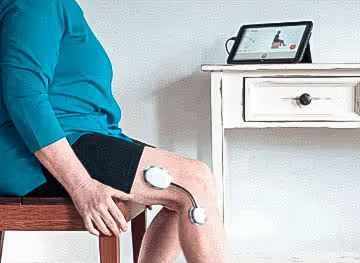
Empowering individuals to regain mobility, independence, and confidence in daily activities through personalized recovery and advanced joint replacement care
Living with chronic joint pain can feel like a significant barrier to enjoying life. At Vaughan Physiotherapy, we specialize in transforming that experience through expert total knee and hip replacement support that goes far beyond surgery.
Total knee and hip replacement surgeries are precision medical procedures for patients with severe joint disease, designed to restore function and alleviate chronic pain. Our approach begins well before the operating room.
Before surgery, our Physiotherapists develop a specialized exercise program to optimize surgical outcomes, consisting of:
A total joint replacement is a surgical procedure performed by orthopedic surgeons to replace damaged joint surfaces with artificial components. While our clinic doesn't perform surgeries, we work closely with local surgeons and hospitals to provide comprehensive pre- and post-operative physiotherapy care.
During surgery, damaged cartilage and bone are carefully removed and replaced with precision-engineered prosthetic components. These implants are designed to replicate natural joint movement, providing:
Our role is to support you throughout your joint replacement journey with expert physiotherapy care. We work closely with your surgical team to create a seamless transition from inpatient to outpatient rehabilitation, ensuring that your recovery plan is tailored to their protocols and your unique needs.
After joint replacement surgery, your recovery journey focuses on gradually rebuilding function through targeted Physiotherapy. Our team will guide you through:
Each person's recovery timeline varies. Our Physiotherapists will work with you to set realistic goals and adapt your program as you advance through rehabilitation.
Expert care from assessment to recovery, designed just for you. No referral necessary.
Your therapist will tailor a plan, and we'll schedule sessions that suit you. Healing takes time - we're with you the whole way.
Use your benefits to access top-quality physiotherapy.
Learn about how we handle insurance claims and direct billing.
❖
Free Phone Consultation (10 min)
❖
Comprehensive Consultation & Assessment (45 min)
❖
Personalized Follow-Up Sessions (30/45 min)


Recovery is not a one-size-fits-all journey. Our rehabilitation programs are meticulously crafted to match your unique physiological needs, lifestyle, and recovery goals.
Our rehabilitation approach emphasizes comprehensive motor function recovery:
Our high-intensity rehabilitation focuses on:
Our expert care includes:
Strategic weight-bearing exercise progression:

At Vaughan Physiotherapy, our dedicated team brings together board-certified Orthopaedic Physiotherapists and advanced surgical rehabilitation specialists with decades of combined clinical experience. We maintain the highest standards through ongoing professional development and stay current with cutting-edge treatment protocols. Our reputation is built on providing personalized, holistic care with proven success rates. Each patient receives comprehensive rehabilitation services delivered with professional expertise and genuine compassion. We understand that choosing a physiotherapy provider for your joint replacement journey is a significant decision, and our team is committed to supporting you through every stage of recovery.
Recover faster, move better, and feel stronger with expert physiotherapy. Our team is here to guide you every step of the way.

Explore the latest articles written by our clinicians